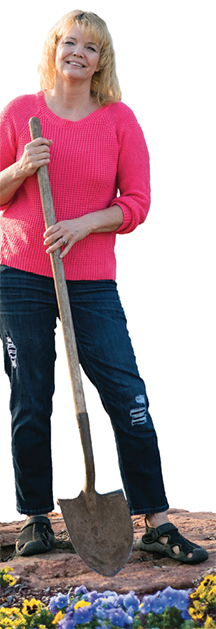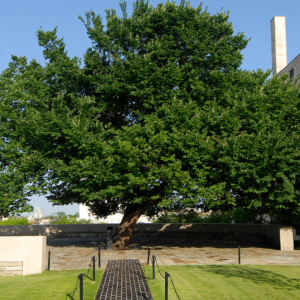FEAT: Mom’s 6 Tips For a Lush Flower Garden
 As a kid in Indiana, the land where everything flourishes, I thought I could grow anything. Then I moved to Oklahoma and found out, nope, it was Indiana.
As a kid in Indiana, the land where everything flourishes, I thought I could grow anything. Then I moved to Oklahoma and found out, nope, it was Indiana.
Growing anything in Oklahoma is hard. Where else do you have days that start with 70 degrees and end at 30? Oklahoma.
If you’re struggling to keep your plants and flowers alive, it’s not you. Hear me on this. It’s not you. It’s Oklahoma! This is tough country. But, over the years, I’ve discovered things you can do that will produce stunning flowers and delicious vegetables. Trust me. Mom knows.
1 Cut away the dead, dying, and deranged.
Don’t panic just because your flowerbed is coming alive. This does not mean it’s too late to prep for summer. Start by cutting away all the dead foliage, dying growth, and deranged limbs going in the wrong direction, rubbing against other limbs halting good air circulation, or obstructing walkways. If it’s brown, brittle, or flimsy, remove it. Then compost it! And watch your garden thrive.
2 Divide, then share.
Divide your herbaceous stuff, like your lilies, asters, mums, peonies, daisies. These are your garden fillers, but they can take over after a few years if you don’t separate them. So divide them. Wait until they begin to bloom, then pull or cut them using a sharp spade. Chop the extra overgrown off, then share! This gives you the perfect opportunity to share a piece of your garden – and your heart! – with your family and friends.
3 Get rid of the unwanted weeds.
This is the time to pull out the weeds. Right now, they’re only peaking out from their winter nap. So attack quick and now before they get aggressive. And don’t leave any root. Even a quarter of an inch root left behind only ticks off the weed. Then they’ll grow just to spite you.
4 Enrich that soil.
If you have a lot of cracking in the top soil, you need to top dress it. Think of it like adding a nutrient blanket, which protects your soil from the wind, cold, or too much heat. My top soil of choice: pecan hulls. The nutrients will work into the soil and acidify it from our natural high-alkalized Oklahoma soil.
5 Next is the pre-emergent.
Pre-emergents create a barrier for your top soil to keep those blowing, wild seeds from germinating. If you’ve got your garden how you want it, all new items have been planted, then apply the pre-emergent. However, if you’ll be planting any additional seeds, such as marigolds, zinnias, or wildflowers, hold off on the pre-emergent. It’s only to be used after the seed you want has germinated and little plants are sprouting. Then you can seal the soil.
6 Fertilize is your finale.
The soil has been enriched using our organic matter, now it’s time to incorporate a slow release fertilizer. This capsulized fertilizer is engineered to break down over time. When choosing which one to buy, make sure it has all the macro and micro nutrients. You need your Nitrogen, Phosphorous, and Potassium (NPK), but you also need your calcium, sulfur, copper, iron, magnesium, nickel, etc. So buy a balanced fertilizer.
Follow these steps and water for a full-bodied flower garden and make your momma proud.
Cindy Townsend is a Horticulturist and owner of Martin and Cindy’s Landscape Design & Consultation




